Solar Panels Are Three Times More Carbon-Intensive Than IPCC Claims
Ecoinvent, the world’s largest database on the environmental impact of renewables, has no data from China, even though it makes most of the world's solar panels
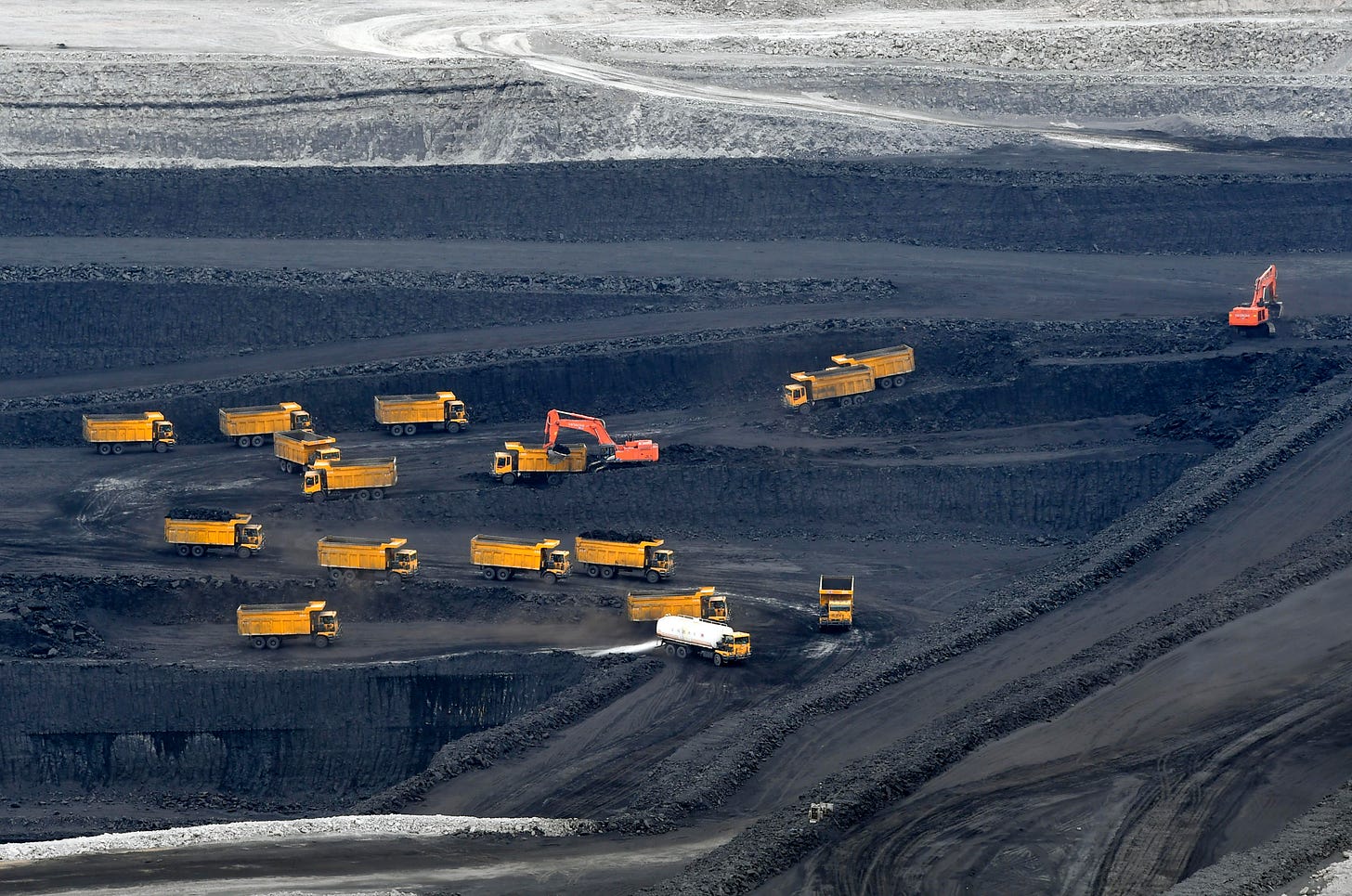
This investigation was done in collaboration with Environmental Progress and The Blind Spot
Last August, in an amalgamation of “The Green New Deal” meets “Build Back Better,” President Joe Biden’s Inflation Reduction Act gifted the renewables industry with billions of dollars worth of taxpayer-funded subsidies.
What few backing the bill realized was that the largest beneficiary would likely be China due to its expansive grip on the global solar photovoltaic (PV) industry. Worse than that, it might end up misdirecting the world’s clean energy efforts into dirtier than appreciated energy technologies because of the country’s ongoing dependence on coal-fired energy.
Information unearthed by Environmental Progress, a nonprofit research organization, points to a gaping oversight in how the figures influencing government net zero policy and investments in solar worldwide are compiled and collated due to the difficulty of collecting accurate information out of China, especially for the purification processes used to create silicon wafers.
The key to this blind spot is that a small number of data compilers provides the source material for most of the assessments. And many, if not all, of them work in collaboration with the International Energy Agency (IEA). The industry voluntarily submits the data in response to academic surveys. The nature and profile of the respondents are never publicly revealed, so there is the potential for conflicts of interest to develop.
A further puzzle is how that data feeds into an organization called Ecoinvent, a Swiss-based non-profit founded in 1998 that dubs itself “the world’s most consistent and transparent life cycle inventory database.” This data is relied on by institutions worldwide, including the IPCC and IEA itself, to calculate their carbon footprint projections, including the sixth assessment report published as recently as March 2023.
Based on such data, the IPCC claims solar PV is 48 gCO2/kWh. But, as we’ll see below, a new investigation started by Italian researcher Enrico Mariutti suggests that the number is closer to between 170 and 250 gCO2/kWh, depending on the energy mix used to power PV production. If this estimate is accurate, solar would not compare favorably with natural gas, which is around 50 gCO2/kWh with carbon capture and 400 to 500 without.
China’s Dirty Fuel Advantage
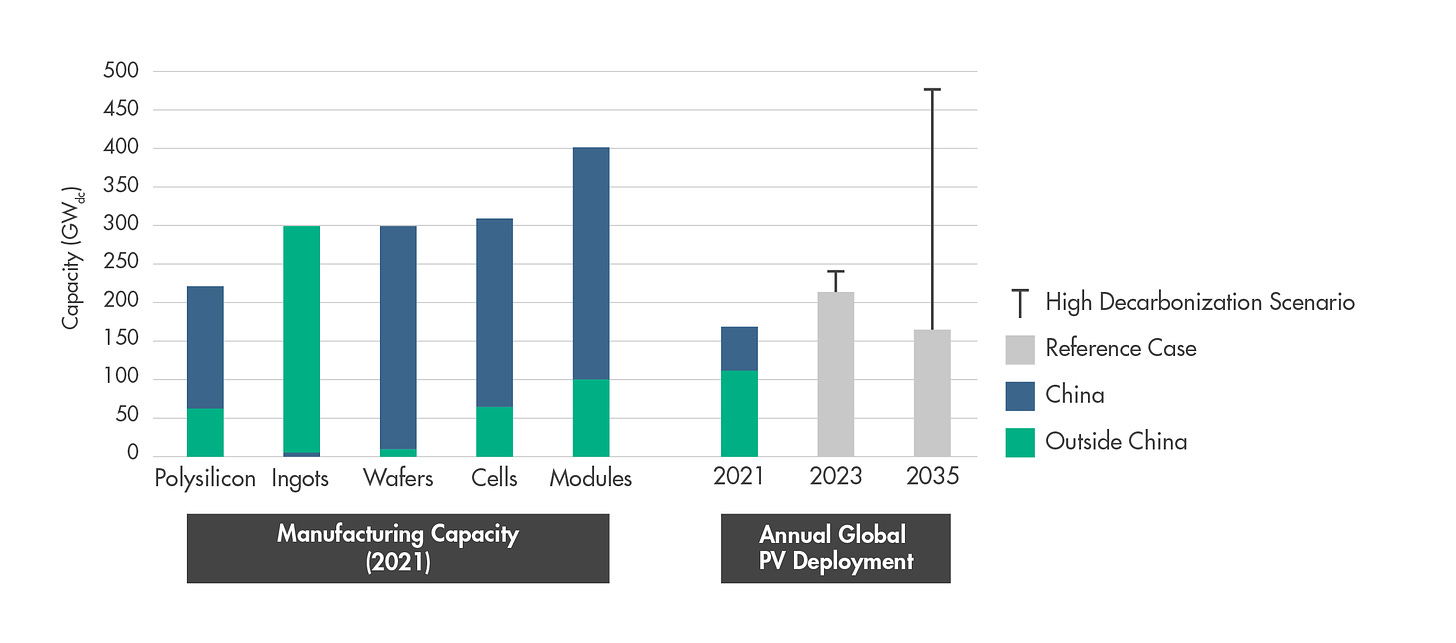
Over the course of a four-month investigation, Environmental Progress has confirmed that Ecoinvent — perhaps the world’s largest database on the environmental impact of renewables — has no data from China about its photovoltaic industry. Meanwhile, the ultimate source of the IEA’s supposedly public data on PV carbon intensity is confidential, and the data, therefore, is unverifiable.
Much of the cradle-to-grave carbon intensity data that governments depend on to guide photovoltaic arrays are instead based on modeling assumptions that are likely to have grossly under-estimated — if not made up — solar’s carbon emissions because they cannot get insights from Chinese manufacturers.
In its most recent report, the IEA predicts that China will continue to dominate solar energy production, delivering over 50 percent of solar PV projects globally by 2024. This trajectory is especially concerning given that China already commands most solar panel production.
The IEA noted that in 2022 China’s manufacturing capacity for wafers, cells, and modules rose 40-50 percent and almost doubled for silicon. In fact, according to market intelligence firm Bernreuter Research, in 2021, China produced more than 80 percent of global solar-grade polysilicon, a critical input into solar arrays. It doesn’t stop there; China manufactures 97 percent of the global supply of solar wafers, another essential component.
How China amassed that market concentration remains an inconvenient truth, all too readily swept under the rug by those pushing for net zero policies.
What we know for sure is that up until the mid-2000s, the market was dominated by Japanese, US, and German manufacturers, many of whom were in the midst of automating their production lines, when Chinese manufacturers swooped in to take their market share. The disruption happened in under a decade, with China’s global share of PV production surging from 14 percent in 2006 to 60 percent by 2013.
But the majority of experts consulted by Environmental Progress agree that China’s competitive advantage did not lie in an innovative new technological process but rather in the very same factors the country has always used to outcompete the West: cheap coal-fired energy, mass government subsidies for strategic industries, and human labor operating in poor working conditions.
Basic reasoning suggests the manufacturing shift must have added to solar’s carbon intensity. But as Environmental Progress has learned, nobody in the carbon counting world has seen fit to research by how much. The modelers are estimating the carbon emissions of solar production as if the panels are still made mostly in the West, grossly underestimating their carbon intensity, even as governments rush to draft and implement net zero policy based on the very same flawed data.
A Lone And Obstinate Italian Data Crusader
The China-sized black hole at the heart of the world’s photovoltaic data might, in the context of the industry, seem obvious.
That didn’t make it any easier for Enrico Mariutti, an introspective but compulsive 37-year-old Italian from Rome, to convince others in the field there might be a problem. It was Mariutti who first made substantial efforts to flag the data discrepancies.
Like Greta Thunberg, Mariutti comes to the tale as an environmental obsessive passionate about facilitating the world’s transition from fossil fuels to cleaner forms of energy. Unlike Greta, Mariutti finished school and knows how to crunch through a data set. He holds a degree in geopolitics and global security, which, while unrelated to the field, has equipped him with enough quantitative skills to ensure he can recognize the difference between good and bad data.
Mariutti first noticed something wasn’t quite right with photovoltaic assessments about two years ago. He was preparing for an online renewables debate with Nicola Armaroli, a research director at the Italian Research Council. But being a data junkie, he decided to pour over the source material to try and figure out why. What he discovered unnerved him. The data didn’t reconcile.
"They [the data] showed how much solar photovoltaic systems used in terms of raw materials: silicon, aluminum, copper, glass, steel, and silver. Then I saw the carbon footprint. It just seemed way too small,” he told Environmental Progress.
According to his findings, the carbon intensity of solar panels manufactured in China and installed in European countries like Italy was off by an order of magnitude. An initial back-of-the-envelope calculation put it at between 170 and 250g of carbon dioxide per kilowatt hour (kWh), as opposed to the official estimate from the Intergovernmental Panel on Climate Change (IPCC) of 20-40g per kWh. Way off.
The scale of the IPCC’s undercount shocks once applied to the EU’s “clean” energy plans. Following Mariutti’s math, the esteemed scientific body underestimates the emissions from the EU’s solar installations built in 2022 alone by 5.4 to 7.6 million metric tons, equivalent to adding 3.4 to 4.8 million cars on the road for a year.
By 2020, Mariutti felt compelled to make his findings public. He managed to publish an op-ed in Italy’s premier financial newspaper Il Sole. The piece argued it was wrong to describe an energy transition that depended on mineral-hungry tech, which “could double the exploitation of the earth’s resources within a few decades,” as a green revolution. It was a hit and went viral across Italian social media.
Enthused by what felt like a public mandate for his mission, Mariutti continued his research, firing off dozens of queries to the data compilers. Responses, however, were far from forthcoming. Until one day in November 2022, a leading Dutch renewables expert, Mariska de Wild-Scholten, replied.
Mariutti was delighted to have made an inroad. Wild-Scholten had been one of five key authors who had made significant contributions — she is named some 454 times — to the IEA report Life Cycle Inventories and Life Cycle Assessments of Photovoltaic Systems (2020) — a starting point for much government decision-making on net zero policy.
But what she told Mariutti was not reassuring.
De Wild-Scholten’s Secret Data Stash
In two emailed responses, Wild-Scholten said that, when determining the electricity consumption of silicon purification, which is used to make wafers, she rarely read scientific papers “because of low data quality, outdated data and or non-transparent data,” while saying little about her own preferred sources other than that it is based on surveys. Responses to other queries were no more reassuring.
Mariutti asked what she thought about 192 countries deciding their long-term energy strategy based on data that at the time reasonably underestimated the average carbon intensity of photovoltaic energy by one order of magnitude (40 vs. 250 gCO2/kWh). Her reply invited more questions than answers. “My experience is that nobody would like to pay for the data aggregation which is needed to come up with publicly available and free updates,” she said, adding that she was working on updating the public data “but only slowly.” Little to no indication was given for the source of her own data.
But, she said, she was happy to share the data she used to inform the 2020 IEA study — attaching it to the email — because it was now “outdated”. It was based on confidential individual company data, she said but did not specify the regional profile of those companies or any other aspects of their identity. She had kept it private only because she had not managed to get the studies funded.
By February 2023, Mariutti decided to self-publish his findings on his own website in a piece titled, “The dirty secret of the solar industry.” The piece made a bold claim: scientists were disingenuously using European data to model the carbon intensity of Chinese solar manufacturing. Was the goal here, he asked, to measure the carbon footprint of solar energy or merely to convince us that it’s green?
With a little prod from Mariutti, it was picked up in May in a piece by Giovanni Brussato for the Milan-based weekly Panorama. Brussato drew on Mariutti’s claim that one needs only to look at the life cycle analysis of China’s glass industry by the China Development and Reform Commission to see if there is a data reconciliation problem.
According to Chinese sources, it noted, glass manufacturing – another critical input in solar production – bears a carbon footprint of only 0.68 kgCO2e/Kg despite an admitted 70 percent dependence on coal-fired energy. A comparable study by Western researchers into the UK’s glass industry, which is mostly powered by cleaner natural gas energy, based on data from Eurostat and Guardian Europe, assessed the industry as having a carbon footprint of 1.12 KgCO2e/kg. To compare, the IEA scores solar between 0.5 and 1 kgCO2e/kg and Ecoinvent with 1 kgCO2e/kg.
A major issue with solar data, according to Mariutti, is that data compilers have been slow to recognize the displacement of the industry to China. It wasn’t until 2016, long after much PV production had already moved east, that the transition appeared on data collectors’ radars. But even then, they depended on new estimates and models rather than data from the source.
“In 2014, they calculated the carbon intensity of PV energy as if the panels were made in Europe, with low-carbon energy,” Mariutti told Environmental Progress, referring to data compilers. “By 2016, calculations started to appear as if the panels were made in China, i.e., supposedly with carbon-intensive energy.”
However, whatever model was used, the resulting carbon intensity was always around 20 to 40 gCO2/kWh. “Had they done the math right, it would come out at around 80 to 106 gCO2/kWh, and that’s with important factors still left out,” claims Mariutti.
After the publication of the Panorama piece, Mariutti’s claims drew the reaction of Dr. Marco Raugei, a leading researcher of emissions from renewable technologies at Oxford Brookes University, embroiling both in an extended online spat.
“We all used Chinese electricity mixes for c-Si PV. And we still got results nowhere near as high as you imply one would. So something is clearly off in your back-of-the-envelope calculations,” Raugei tweeted in April this year. By way of example, he cited an influential paper from 2021 on the sustainability of PV systems by life-cycle analysts Enrica Leccisi and Vsili Fthenakis.
Mariutti had previously critiqued Leccisi and Fthenakis’ analysis in his self-published piece, noting that while the electrical input of solar was modeled according to a Chinese scenario, thermal input remained European. After Mariutti pointed out to Raugei that he had tried to contact Leccisi for comment on his findings without success, the conversation with Raugei went cold.
In further correspondence with Environmental Progress, Dr. Raugei stressed that in his research, he endeavored to use the closest possible approximations to Chinese data in order to create a realistic scenario.
The Missing Chinese Data
When scientists, academics, or researchers lack accurate data in the Western world, they usually work hard to fill the data void directly. Major efforts are undertaken, and huge sums are spent on sourcing ever more reliable and better data.
Not so, however, with the China data anomaly. A lack of transparency, language barriers, and a plethora of inaccessible institutions – alongside a general reluctance by researchers to unearth realities that might dispel existing assumptions – have led to an overreliance on models and inputs extrapolated from Western manufacturing processes.
The IPCC’s own estimate that solar’s carbon intensity is four times that of wind and nuclear, but 10 times less than gas and 20 times less than coal is derived from such assumptions.
Unsurprisingly, the authors of the IPCC’s sixth assessment report, casually referred to as AR6, base their life cycle assessments (LCA) of solar energy on studies that do not represent the current state of the industry. Of the four studies cited by the authors, two evaluate only European manufacturing of solar panels. The third model is a state-of-the-art Chinese-manufactured panel, the Upgraded Metallurgical Grade Silicon (UMG-Si), which is no longer in production. The fourth reviews 16 studies, all of which either model solar panels that are no longer in production, model panels that make up only a few percentage points of the global market, or employ Ecoinvent’s 1 or 2 inventories, which also use European electricity mixes.
Ecoinvent, the omnipresent database that is relied upon by policymakers and academics across the planet, as well as manufacturers, big and small, was founded by Dr. Rolf Frischknecht.
For over 20 years, his Swiss non-profit, funded at least in part by the Swiss government and the photovoltaic industry, has collected data on the environmental impact of renewable energies. Whether you’re modeling the low-carbon appeal of recycled plastic packaging, automotive filters, or titanium powder, Ecoinvent is the likely source of the data. A recently agreed collaboration on zero-carbon shipping with major players in that industry showcases the association’s still-growing influence.
Since the early 90s, the reputation of Dr. Frischknecht has grown in step with the renewables industry. Some 20 years ago, he began a collaboration with the IEA through the Photovoltaics Power Systems Programme (PVPS), a joint initiative from the IEA and the global PV industry to conduct research on solar and turn it into a global energy “cornerstone”.
Despite his careful stewardship of Ecoinvent, in 2021, Frischknecht quietly resigned from the body he had founded decades earlier. In his resignation letter he noted “irreconcilably different perceptions regarding materiality, reality, quality and accountability” of their latest data.
“There was a drastic shift from (appropriate) data to methodology,” Frischknecht wrote to Environmental Progress. Faced with a movement away from real-world data collection, discussion of what were the crucial data points, proper referencing, and extensive data quality checks, as he had explained in his resignation letter, Frischknecht felt obliged to move on. “During my career, I tried, and try, to be independent of direct, indirect, and subtle attempts to influence the modeling or the data,” he told Environmental Progress.
He then cast doubt on the quality of the Ecoinvent data, telling Environmental Progress, “The PV data in Ecoinvent is from 2011, and there is no data from Chinese information sources.” In email correspondence with Ecoinvent, Environmental Progress was able to confirm Frischknecht’s allegation.
Frischknecht now runs Treeze, a “young and experienced” life cycle assessment consultancy, which is “involved in large EU projects”. Treeze also receives funding from the Swiss Federal Office of Energy and collects life cycle data for the PVPS “Task 12” report on solar’s sustainability.
The total lack of Chinese input into Ecoinvent’s data, however, has not stopped the IEA from continuing to depend on the potentially outdated work of Frischknecht’s brainchild for their own estimates.
These revelations undermine the foundations of the sustainability industry, which bases a significant portion of its certifications on Ecoinvent’s data and promises businesses and governments that earning their certifications protects the planet.
The sector has ample reason to trust Ecoinvent without checking its data. The sustainability sector makes billions of dollars each year thanks to the scale of carbon reductions they claim to provide, and disclosing that it failed to deliver its most basic pledges threatens its business.
Circular Data
For more clarity on why researchers continue to rely on Ecoinvent despite the oversights, Environmental Progress contacted Mariutti’s Twitter sparring partner, Dr. Raugei. He explained that one of the reasons the database has come to prominence was because of how easily the data could be “disaggregated,” allowing for the insertion of custom variables.
While the IEA depends on a range of companies to avoid vested interests gaming the outcomes, Raugei told Environmental Progress that “It’s true that some studies do not use the right variable” and that key papers’ data is out of date, even if more thorough researchers such as Raugei himself “are able to put our own variables in the models to rectify this.”
The problem is that many of these bespoke variables, as in the case of Raugei, are also sourced from the IEA, which once again themselves rely on Ecoinvent data leading to an entirely circular situation.
Contacted again by Environmental Progress, Frischknecht admitted, “It is difficult to get first-hand industrial data, particularly from Asian companies”, but deflected by noting that the PVPS had managed to obtain primary data from at least a couple of commercial entities directly, notably FirstSolar and TotalEnergies. This data, to his mind, confirmed broad researcher assumptions that carbon footprint values between 25 and less than 60 g CO2-eq/kWh were fair.
“I personally see no reason or scientific evidence to change the key figures used to model the LCI and LCA of PV electricity,” he told Environmental Progress by email. “Thus, I cannot support your working hypothesis of (dramatically/vastly) underestimating the lifecycle-based environmental impacts of PV electricity.”
And yet, neither of these companies operates wafer manufacturing facilities in China. FirstSolar even proudly differentiates itself as being unique among the world’s 10 largest solar manufacturers for being the only US-headquartered company and not manufacturing in China.
Frischknecht did, however, offer an intriguing clue to the nature of de Wild-Scholten’s own proprietary data, which Ecoinvent also draws on. “She had access to a larger, confidential set of industry data (major cSi panel, cell and wafer manufacturers),” he wrote.
But even if de Wild-Scholten did have access to such data from China, there is little clarity on whether she included it in Life Cycle Inventories and Life Cycle Assessments of Photovoltaic Systems, the aforementioned highly influential IEA paper that she and Frischknecht worked on together. Here, Environmental Progress’s research may give cause for doubt.
An all-important data point in the carbon footprint assessment of today’s PV production is the energy consumption of silicon purification. It’s a highly energy-intensive process, requiring heat above 1000 degrees Celsius and fuelled by coal. The IEA’s estimate in LCI and LCA of PVs is 49 kW-kg[1]; “suspiciously low,” says Mariutti. But where is the data from? Is it a Chinese industry source from de Wild-Scholten’s secret stash?
The reference given is to yet another IEA report, Trends In Photovoltaic Applications 2019. But here, too, only an estimate is given –49 kW-kg [2] – not a data source, whether Chinese or otherwise. So how did the IEA come up with its figure for solar’s dirtiest and most energy-intensive process?
The IEA Perspective

After a number of lengthy exchanges with Environmental Progress, IEA representatives and collaborators could only offer evasive and not always entirely corroborating answers.
“It’s true that silicon purification is the most energy-intensive stage in PV production,” IEA’s senior energy analyst, Mr Heymi Bahar, told Environmental Progress over the phone. He also accepted that the data point was central to all calculations of solar’s carbon intensity. “But this data is collected anonymously and cannot be shared.”
Pressed by Environmental Progress, Bahar asked, “Why should the IEA share the names of the companies we get the data from?” To the point that verifying the accuracy of the data, given the huge implications for public expenditure, is important, he added, “Why? Does the fossil fuel industry offer any alternative?” implying there are no better options.
Environmental Progress asked whether the IEA would stand over the unverifiable data in its reports. “We are an umbrella organization,” said Bahar. “We do not oversee the work of all our collaborators. We do not always agree with their opinions.” On whether the IEA trusts that the data it publishes in collaboration is accurate? “Most of the time,” Bahar said.
Two members of the IEA’s solar industry collaboration, PVPS, offered slightly different takes. Daniel Mugnier, PVPS chairman, said that energy consumption data came from “anonymized interviews conducted by Task 12 experts” and that procuring further information would prove overly time-consuming and prevent PVPS from “protecting its sources.” One of those experts, analyst Izumi Kaizuka, told Environmental Progress the information came from a Chinese business association without offering further detail.
Environmental Progress put it to Mugnier and Kaizuka that the only primary data sources available to the PVPS may be the two mentioned by Frischknecht, those without noteworthy links to China: FirstSolar and TotalEnergies. Environmental Progress also asked to know the degree to which the PVPS had relied on assurances from de Wild-Scholten regarding the accuracy of their conclusions without actually being able to consult her proprietary data. At the time of publishing, no response was received.
Presuming the mystery data did come from a Chinese source, Environmental Progress asked Bahar whether this was trustworthy given the vested interest held by both Beijing and the industry it massively subsidizes. He replied that China was “part of the IEA family,” leaving him in no position to comment.
Environmental Progress reached out to Professor Angel de la Vega Navarro of the National Autonomous University of Mexico, who contributed to chapter six of AR6, which focuses on energy systems, and working group III on the mitigation of climate change.
He replied, saying he lacked the expertise to comment further but that the questions we were raising were important. Of the four experts he said were better suited to answer our queries, only one replied, Andrea Hahmann of the Technical University of Denmark: “Unfortunately, I am not knowledgeable enough to provide any comments on the information you have provided as it is outside my area of expertise.”
Environmental Progress contacted Garvin Heath, a contributor to the IPCC Fifth Assessment Report (AR5) and the IEA PVPS report, and received a non-response from the media relations department of his employer, the US National Renewable Energy Laboratory. “Unfortunately, due to current time constraints with our relevant research teams, we will be unable to participate in this.”
Ecoinvent, meanwhile, now headed by Dr. Nikolas Meyer, has not responded to requests for further comment on its lack of Chinese data.
Worryingly, Mariutti claims this is only the tip of the iceberg, with accurate modeling being missed on storage, grid upgrades, methane emissions and more. The IEA has admitted to Environmental Progress that its carbon footprint calculations do not account for three important factors in PV production: silicon mining; toxic panel waste, which promises to overwhelm recycling infrastructure; and something known as the albedo effect. This is when the highly reflective properties of dark-colored solar panels lead to an increase in the greenhouse effect.
According to the IEA, when taken into proper account, the first two factors alone could more than triple the “payback period” for panels, i.e., the length of time before they become carbon neutral after installation.
“Why is the IEA not being transparent about its sources and the gaps in the data?” asks Mariutti. “A hasty transition to solar and other renewables without cast-iron proof of the benefits, all the while handing control to China, could be a huge error.”
With critics like Mariutti being shut out of the debate, science, he says, “is behaving like a religion.” Patrons of the science are giddy bureaucrats charged with convincing taxpayers across the globe to hand over trillions in funding for the feted clean transition.
By seizing control of PV production and acclimatizing well-meaning analysts to the retention of basic data, China has won for itself the lion’s share of global subsidies. What little data may even exist on the sustainability of the PV industry is revealed to selected partners such as the IEA piecemeal and in a manner ensuring its unverifiability.
A picture emerges of an aspirational Western industry captured lock, stock, and barrel by secretive, coal-loving Beijing. It’s a worry for the West’s economic development, never mind energy security and climate action. If solar is anything to go by, the great transition seems less based on data than a mixture of blind faith and vested interests.






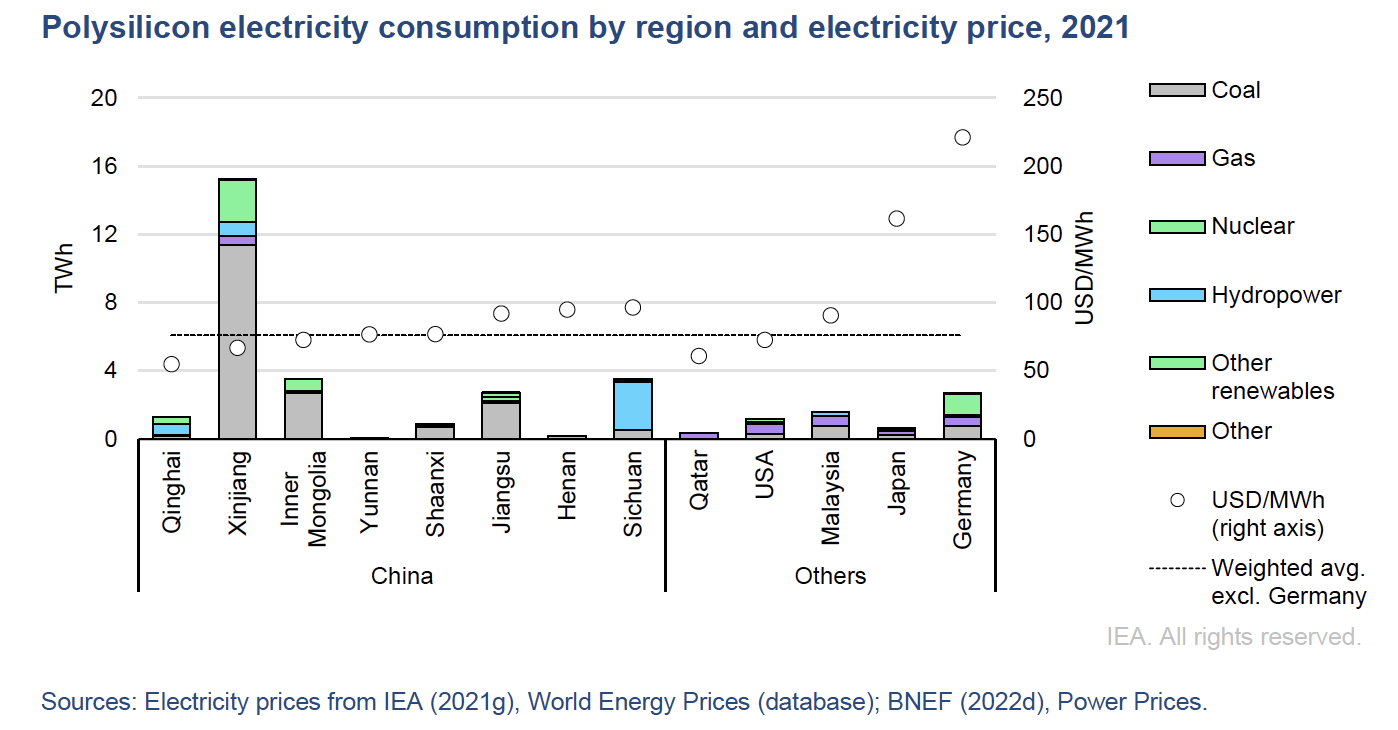


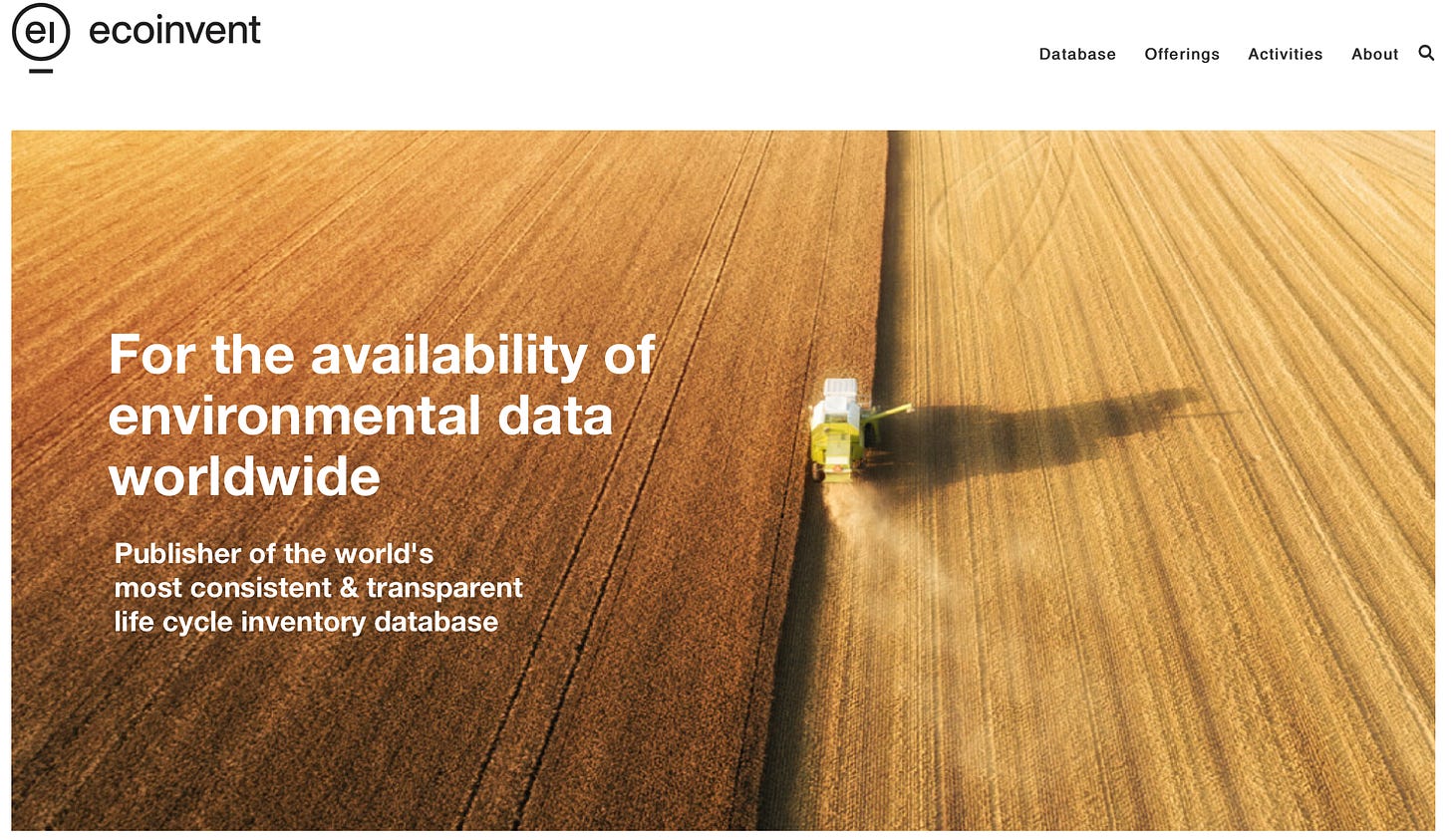
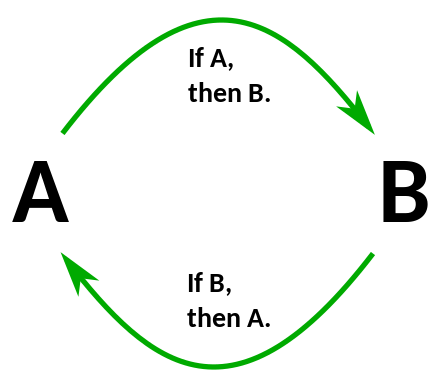


Uighur slave labor, Congolese child labor, and dead whales are good for ESG! Wind turbines and solar panels are magical devices that require no carbon emissions to produce and maintain. You must support The Current Thing Company to boost your ESG score: https://yuribezmenov.substack.com/p/current-thing-company-yuri-sharktank
The faith placed in computer models is credulous and obscures the danger in their reliance on critical decision making. Multi variable models using incomplete, inaccurate, estimated or even false data are more of a threat than blind prognostications. This absolute blind faith in our scientific communities ability to predict the future is absurd.